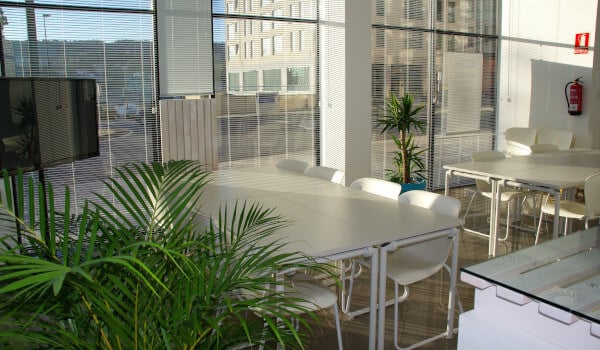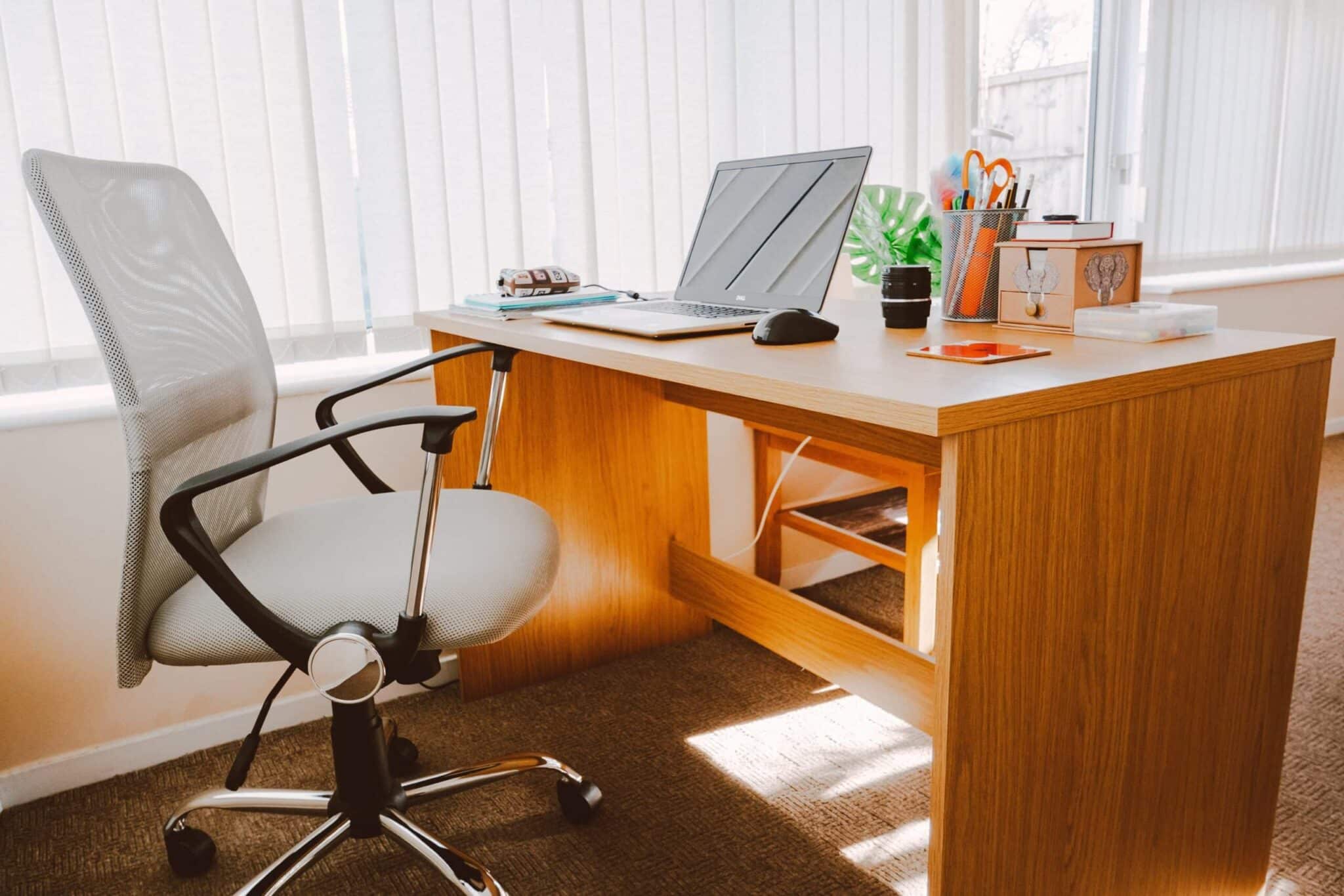
A recent survey from CORT found that 43% of respondents are interested in tactics they can implement to improve overall employee health and wellness.
Employees are the lifeblood of any company. If they aren’t taken care of, the company feels the impact. In this post, we’re sharing seven ways facilities managers can make the workplace a healthier place for employees.
Make the case for (and implement) remote work
There are countless studies that show the benefits of remote work. It turns out, it’s not just beneficial for keeping the office bug from going around (though it’s great for that, too.)
A survey from FlexJobs found that 66% of people feel they would be more productive working from home as opposed to a busy office. What’s more, 34% of U.S. workers would take a pay cut of up to 5% if it meant they could work remotely.
In addition, working remote is also great for:
- Improving work-life balance
- Cutting office-related expenses
- Overall employee health (mental and physical)
When it comes to combating office sickness, the opportunity to work remotely is a great option for employees and employers alike. The choice to work from home might encourage sick employees to actually stay home and prevent the spread of illness around the office.
So how can facilities managers advocate for more opportunities for remote work?
Work with the human resources (HR) and information technology (IT) teams to build the infrastructure required to launch and maintain a successful remote work process. Put an emphasis on the company’s sick leave policy—that if you’re feeling sick, you should stay home—as well as give employees who are not sick the chance to work remotely to avoid the possibility of getting sick.
This flexibility is critical in creating a healthy work environment. Plus, with 90% of employees saying they’ve come to work while sick according to one report, companies must have a plan in place.

Leverage hot desking software
Hot desking runs in the same vein of remote work in that it offers great flexibility to employees. Hot desking is the idea that employees take whatever desk is available, instead of working from an assigned desk.
While not always appropriate in every situation (for example, during social distancing), there are normally many advantages to hot desking, including:
- Cuting real estate costs
- Improving collaboration and relationships among employees
- Increasing productivity
- Giving employees a place where they can do their best work
This concept allows employees to work where they’re most comfortable and creates a collaborative environment. Employees no longer feel like they are “on an island,” which is great for morale.
In addition to hot desking, free addressing is another excellent solution to improving employee wellness. Free addressing uses sensor technology at each desk so employees can sit anywhere that says “available” on the floor plan without the need to check in or out.
To launch a successful hot desking or free addressing system, FMs will need to work closely with IT and HR to ensure a smooth transition and that all teams and employees are on the same page.
Offer ergonomic seating
Because people are sitting now more than ever before, the type of chairs you have in your office are important. In fact, JustStand.org found that the average person sits for 12 hours a day and the fourth leading cause of mortality is physical inactivity.
That’s why adding ergonomic furniture to the office can be a total game changer for employees. Ergonomic chairs, or chairs that support a healthy posture and are designed for comfort, can make all the difference for employees, no matter how long they sit.
There are several benefits to ergonomic furniture:
- Promote better posture, which can reduce back pain and fatigue
- Can be adjusted to fit an individual’s needs
- Are designed to keep joints and tissue in a natural position
But what makes a chair ergonomic?
- Adjustable seat, back, and armrests
- Padded seat and back
- Lumbar support
- Easy swivel
- Stable base
Employees that aren’t fighting pain or fatigue all day are happier and healthier, and as a result, more productive.

Add sit-to-stand desks to cubes or work areas
Not only are people sitting more than ever, they’re sitting at their desks for extended periods of time. A study from the British Psychological Society found that the average person spends about 5 hours and 41 minutes at their desk each day, and it’s having an impact on employee health.
Of course, doing things like taking walks and getting up every 30-minutes are all important, but there’s another option to consider. Standing desks allow you to adjust the height of the table surface of the desk so you can work comfortably while standing.
The benefits of standing desks are too significant to be overlooked:
- Standing lowers your risk of weight gain and heart disease
- Lower your blood sugar levels
- Improve back pain and energy levels
Standing desks give employees the flexibility to stand (or sit) when they’re looking to change up their desk configuration.
Switch to adjustable, energy-efficient lighting
Lighting has a big impact on our mood and productivity levels. More than you might think. The color temperature from lighting can influence how much employees get done while at the office.
According to the University of North Carolina, color temperatures fall into three categories: warm, mild, and cool. Which color temperature is best for offices? A cool temperature helps employees be their most productive selves. Cool temperature lighting mimics natural light the most and has been found to decrease depression, improve mood and quality of sleep, and increase productivity.
Therefore, changing your lighting to something that’s not only energy efficient, but that mimics natural light (especially if your office is short on natural light) can be a beneficial thing for employees.

Incorporate biophilic design elements
Similar to lighting, there are other components FMs can add to a workplace that makes for a better environment for employees.
Biophilic design, or the design concept rooted in connecting employees to the natural environment, is one such tactic. Whether it be adding plants or skylights throughout your office or adding a living wall, there are tons of ways to incorporate nature into the workplace.
You could also introduce some kind of company-wide garden initiative if you have the resources and enough interest. It’s a great way to get employees involved and work together on something not directly related to work projects.
But why? How is biophilic design impacting employees?
- Reduced employee absenteeism and stress levels
- Improved employee health
- Increased employee happiness
One of the great things about biophilic design is that you can completely customize how this looks for your office; there isn’t a one-size-fits-all solution. Adding a bit of the outdoors to the indoors could be a great way to improve employee mood, productivity, and make employees feel great about where they work.
Introduce healthier snack or meal options
Employees spend tons of time at work and depending on how long they’re at the office, they may eat one (or several) of their meals at work. If you offer meals for your employees, take a look at what you’re offering. Is it healthy? Or are you mostly serving things like pizza, burgers, fries, and the like? Or, if you’re not serving meals, what types of snacks are you keeping around the office? Chips? Candy?
What we eat is just as (if not more) important as how much we exercise. Therefore, make sure you’re offering employees healthy alternatives to eat instead. Snacks like veggies, fruit, nuts, and granola are always a good option. A salad bar packed with healthy offerings like nuts, a variety of lettuce options, veggies, and other toppings can encourage employees to ditch other unhealthy foods.
Companies like SnackNation and Aramark make it easy to offer healthy meal and snack options to employees. If your company doesn’t offer snacks or meals, create a program that educates employees on how to eat healthier or pack healthy meals and snacks for the office.
Listen to employee needs and adjust accordingly
Keeping employees happy and healthy is the key to a successful, thriving company. Happy employees are excited to come to work, be with their team, and do their jobs.
Start with a small change. Get employee feedback, figure out what initiatives are making the best impact and go from there.
If you’re curious to see how facilities management software can improve your office, contact us today and we’ll help find the solution that’s right for you.
Photo Credits: Pexels, Pixabay, Andrea Piacquadio, Lisa Fotios, Rodolfo Clix



